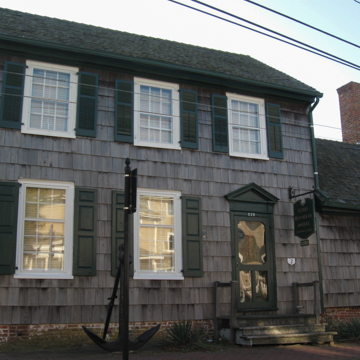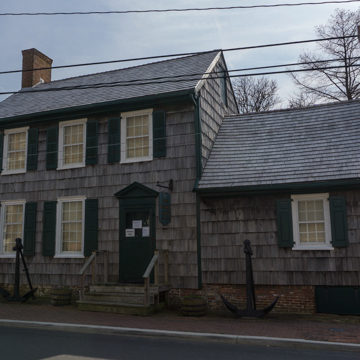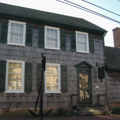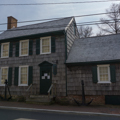You are here
Cannonball House (David Rowland House)
Now a nautical museum, the plain, two-story cypress-shingled dwelling supposedly received damage to its brick foundation by a cannon-ball during the British bombardment of Lewes in 1813. In 1938, it housed offices, and later it became a restaurant. By 1961, however, it was vacant and had a laundromat attached, having become so decayed that brick nogging showed through the walls. The Lewes Historical Society was formed in the latter year to save the landmark and restore it (1964–1968, George F. Bennett). The wing was moved from a house in Millsboro. A nearby park, redesigned in 1914, features historic cannons memorializing the bombardment.
Writing Credits
If SAH Archipedia has been useful to you, please consider supporting it.
SAH Archipedia tells the story of the United States through its buildings, landscapes, and cities. This freely available resource empowers the public with authoritative knowledge that deepens their understanding and appreciation of the built environment. But the Society of Architectural Historians, which created SAH Archipedia with University of Virginia Press, needs your support to maintain the high-caliber research, writing, photography, cartography, editing, design, and programming that make SAH Archipedia a trusted online resource available to all who value the history of place, heritage tourism, and learning.


















